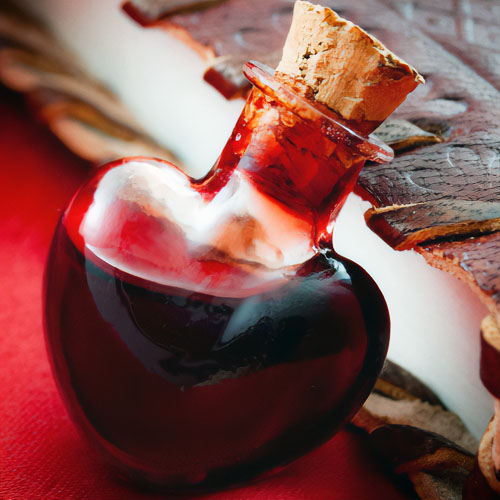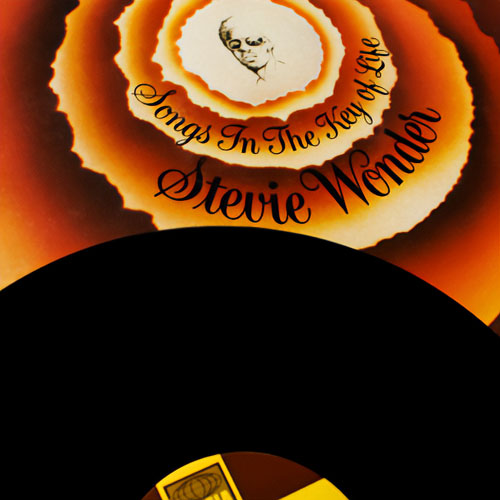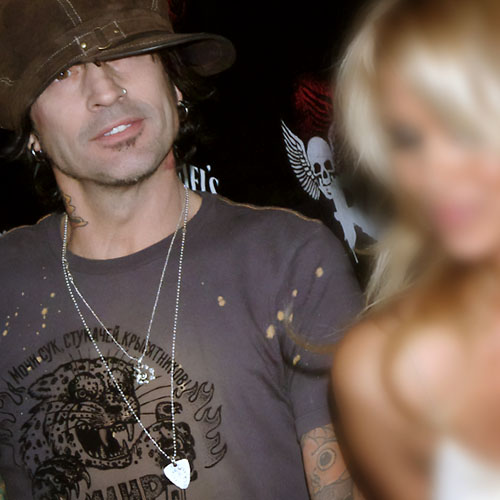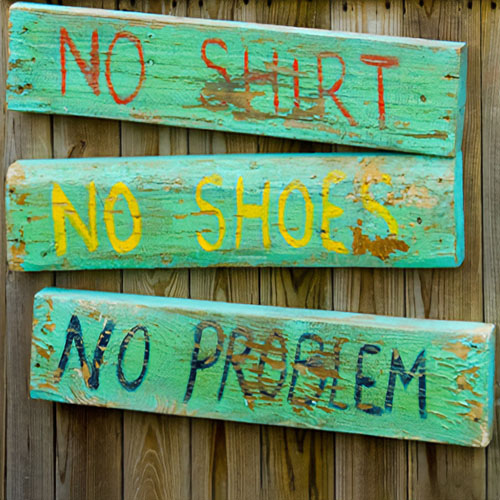Perhaps the most shocking fact about the bizarre death of one of America’s most popular young stars is that so many people have tried so hard to keep the truth from being told.
John Belushi’s Last Five Days
Sometime on the cool morning of March 5, 1982, John Belushi died in Hollywood. The official verdict of the cause of death came five days later, and for many it was not unexpected: “acute heroin and cocaine intoxication.” Another superstar from the precarious high-wire world of rock culture had been playing with fire once too often. Rather than being remembered as the cavorting Bluto from Delta House, or the hip Jake Blues, John Belushi has as his ghastly final image that of a man lying naked and dead in a rented bungalow, with multiple needle marks on his swollen arms. The gifted young comedian’s legacy of laughter quickly has been transformed into a pot of gold for sensation-mongers, tabloid exploiters, and self-appointed moralists.
However, as is usually the case, the true story is much more complicated. Belushi, far from being the gentle, needle-fearing creature pictured by his family and fans, was also not simply a wild and hedonistic and degenerate drug addict, uncaring for anything but the next chemically induced thrill. The truth is that John Belushi had become a very sad and confused person, and the manner and timing of his death were extremely inconvenient for many people.
There are still some facts about the death of John Belushi that are not known. There are still some witnesses who, either from fear or from a desire for anonymity, have gone into hiding and have refused to talk about what they know. But this article, based on a six-month investigation involving hundreds of separate interviews, is as definitive an account as we are likely to have for a long time — if ever.
Obviously, in a situation as complicated and emotional as this one, there are sometimes conflicting versions of certain parts of the story. In these cases we have chosen to believe those people whose overall accounts were consistent with the truth as we learned it. Of course, whenever possible, we have corroborated our story with as many eyewitness sources as we could discover.
One final note: it is evident that we were not present and on the scene in Hollywood during this fateful first week in March. We do not have tape recordings of Belushi’s final conversations and so have had to re-construct them from the accounts of those individuals who spent these days with him. Because people often tend to recollect conversations with slight inaccuracies, we are presenting the information we have received with the assurance that this article is as complete an account as is presently possible.
Among the new facts that you will learn are the following:
- John Belushi may have died from a heart attack.
- Contrary to a well-publicized article in the National Enquirer, it is very unlikely that Cathy Smith injected Belushi with the fatal dosage of drugs.
- Cathy Smith, a heroin addict and the so-called mystery woman in the case, had, in fact, been helpful to the police in the past.
- Los Angeles Police Department officers discovered the body several hours before the time officially reported.
- The Los Angeles Police Department has apparently covered up very important circumstances surrounding Belushi’s death.
- The Los Angeles Medical Examiner’s office has refused either to conduct or to reveal crucial postmortem tests that could determine the actual cause of death.
- Belushi and other Hollywood super stars had been under surveillance by L.A.P.D. narcotics officers.
But perhaps the most surprising and shocking aspect of this story is the fact that so many people have tried so hard to keep it from ever being told.
“Pimps, Prostitutes, and Parasites”
John Belushi spent the first five days of March 1982 and his last days on earth amidst the glamour and sleaze of Hollywood. His days and nights were spent in the bars, nightclubs, hotels, restaurants, and other gathering spots for the super-sonic living crowd along West Hollywood’s Sunset Strip. It is an area where pimps watch their prostitutes gather for blocks, descending in droves on passersby arid cruising cars whose occupants have a few dollars to burn. It is an area where out on the streets one can hear the decibel-shattering sounds of punk rock bands from places such as the Troubadour and the Roxy. Watching its costumed denizens, one can easily conclude that he is in the land of Oz.
‘It was 5:00 A.M. and John Belushi was leaning on April Milstead’s doorbell. “Do you have a couple of bucks?” he asked. Then he turned back to her: “Do you think you could score some heroin for me?”’
In the words of one who lives and works on the Strip: “When you live in Hollywood, you are living with pimps, prostitutes, and parasites.” With enough cash, credit cards, or connections, life can be exciting on the Strip. Women are as available inside its bars and clubs as they are on its street corners. If you are famous enough on the Strip, you can get to see and be seen at such private “in” clubs as On the Rox. And most of all, if you are part of the West Hollywood scene, cocaine, the area’s hottest commodity, is readily available all over.
Hollywood tends to bathe its obsessions in an aura of glamour and fantasy. Cocaine and cocaine dealers are no exception. Studio honchos and coke dealers will sit elbow to elbow inside the bars along the Strip, sharing drinks and intimacies. Few parties hosted by the stars will lack the presence of sleazy coke dealers. Even would-be rock and movie stars find it necessary to maintain drug connections along the Strip. Indeed, it can truly be said that cocaine is the great Hollywood equalizer, making it the most egalitarian community in the country. On March 1, 1982, John Belushi moved in.
March 1, 1982 — 5 AM.
The sky is still dark when the doorbell rings at 914 ½ Martel Avenue. April Milstead and her boyfriend, rock musician Charlie Pearson, are asleep. April — twenty-six, thin, long-legged, her short black hair cut in punk style, and pretty — left her hometown of Washington, D.C., two years earlier to pursue a modeling career in Hollywood. Suddenly, April found herself in a city of thousands of pretty and ambitious women. Her career seemed less promising.
April’s Washington boyfriend, Charlie Pearson, was a rock composer and singer who had also enjoyed some mild success, on a few occasions backing up the Rolling Stones. However, out West he was no more successful than April in advancing his career. Their relationship had often been stormy, partially because of their career frustrations, and also, according to Charlie, because of April’s fondness for drugs.
April underplays her use of drugs, especially cocaine. But like Belushi and his West Hollywood acquaintances, she was a night person. Day and night are turned upside down in this world, where one parties all night and sleeps until late afternoon. A typical evening for April will begin at places like the Improv or Comedy Store, with admirers and/or coke dealers paying for the drinks. Later on, the party adjourns to somebody’s home, where a few grams of coke will be made available.
April had been introduced to Belushi a few months earlier. John was physically attracted to her and found her directness and candor refreshing. He spent the better part of an evening talking with her about various topics, one of which was the fact that April knew several drug dealers. At this time, April was convinced that John used only one drug — cocaine. Now he was back in Hollywood, and he was leaning on her doorbell at five in the morning.
“It’s a little early, don’t you think?” April greeted him. John explained that he had arrived in town only a few hours ago. “I feel like having breakfast,” he said. “Do you have a couple of bucks?” Although a millionaire at thirty-three, John Belushi had no money in his pockets. April loaned him five dollars, and while Charlie slept, the two chatted for a while. As he was leaving, John suddenly turned to her. “Do you think that you could score some heroin for me?”
April was shocked. It was the first time that she had gotten any idea that he had any familiarity with the drug. “Oh, yes,” John explained, “I’ve snorted it a few times in New York.”
April was not to be the only person surprised to learn that John was using heroin. Family and close friends still swear that the late comedian never used it. Danny Aykroyd told Penthouse: “He liked the coke, but the Jones thing [heroin] was not his thing.” But Danny was wrong.
April told John to return later that afternoon. In retrospect, she realizes that she probably should have simply refused John’s request. But at the time, the promise of a week with John Belushi seemed exciting. To have turned him down may have excluded April from that week. Moreover, he could have scored heroin easily from other sources.
April’s role in John’s life was not a large one, but it was to be crucial. In addition to using her as a go-between, the star was somewhat infatuated with the struggling model. When she was around, John would often be indifferent and rude to others, especially her boyfriend, Charlie. One late evening at John’s bungalow — in front of Charlie — John asked her to stay the night with him. April politely refused. Charlie sizzled and kept quiet. Despite their strange relationship, April says that they never had sex.
March 1, 1982 — 4:30 P.M.
John Belushi parked his rented red Mercedes in front of the house on Martel. It appeared to April that John had not slept since she saw him earlier that morning; but that was nothing unusual for the Animal House star, who would speed through several days and nights before crashing at somebody’s house. John repeated his request for heroin.
April decided to have a serious talk with John. “John, look, you’re a big boy, but I’ve got to warn you about the person I’m going to introduce you to. The heroin crowd is a lot different than everybody else.” Belushi only laughed at April’s admonition, and repeated with bravado that he had done heroin back east. A few minutes later the doorbell rang.
Catherine Evelyn Smith was approaching her thirty-fifth birthday. She had been around Los Angeles for several years and was well known in the Strip’s various clubs and bars. Born near Toronto, “hard” Cathy had aspirations of becoming a rock composer or singer. Meeting no success, Cathy did the next best thing to keep her close to the world of rock ‘n’ roll, where she continues to fantasize that she will achieve her place of stardom: she became a groupie. Cathy, whose face and body do not hide a long period of drug abuse, had been, in the words of one who knew her, “a real beauty when she was sixteen.” Her first sanctuary was in the home of singer-composer Gordon Lightfoot, a fellow Canadian.
Lightfoot was in love with the young Cathy, dedicating the song Sundown to his loss of Cathy when the two ended their romance. Cathy had entered Lightfoot’s home as a rejected and unhappy teenager, having been placed for adoption when she was very young and feeling that she was never really loved in her adoptive home. Although many people have found Cathy coarse and seemingly cold, a few individuals, Lightfoot being one, have found something softer beneath “hard” Cathy’s surface. One individual who lived with Cathy in Los Angeles described her as “a warm and trusting friend.” A female friend called Cathy “fragile.” These friends were to demonstrate their feeling tor Cathy with loyalty and assistance after Belushi’s death. When she flew back home to Toronto, broke and mentally anguished, Lightfoot was to help her financially, while others provided sanctuary in their homes.
After Lightfoot, Cathy moved on to others in the rock world, living at various times with members of the Rolling Stones and the Band. Some of the members from these groups make no secret of their dislike for her, yet others, Rick Danko of the Band being one, remain friendly with her.
Cathy became well known for her ability to score hard drugs, in addition to her expertise in their intravenous use. Shortly after Cathy arrived in Los Angeles she was a heroin addict.
‘Cathy Smith jabbed the needle into John’s arm. For the next few days they were to be nearly inseparable. Cathy herself, with typical perversity, told us: “I kept that sucker alive for five days.”’
Cathy would stop taking drugs from time to time, replacing her addiction with alcohol. Her loud, often obnoxious behavior in the bars along the Strip resulted in not a few bartenders’ throwing her out. In January 1981 Cathy was stopped by a California State highway officer for a traffic violation. Her behavior caused the police-man to search her car. Heroin was found. By the time Cathy had to show up in court, a deal was arranged. She was placed on probation for the heroin possession and, as is typical in California, was expected to attend a drug rehabilitation program. Cathy never did attend; neither did she stop injecting herself with heroin. At the time of John Belushi’s death, Cathy was still on probation.
Cathy Smith has told others that she had met John Belushi on the set of 1941. In addition, there is some evidence that Cathy had spent some time with John only a month earlier in Hollywood. A freelance writer, Chris Van Ness, told Penthouse that he shared a table at a restaurant with Cathy Smith and John Belushi a little more than a month before the star died. A security guard recalls delivering a message to Cathy for her to call John in New York while she occupied Belushi’s bungalow at the Chateau Marmont in his absence. John’s closest friend and business partner, Danny Aykroyd, refuses to believe this: “She was not a friend of his. She was a means to an end. Maybe she was just there. I never even met her.”
April Milstead is sure that Cathy Smith and John were never friendly with each other before she introduced them to one another. “There’s no way they knew each other. In fact,” she says, “John took an immediate dislike to Cathy that day in my house.”
John’s seeming distaste would probably have been more intense if he had realized something that none of Cathy’s friends, including April, knew. Sometime earlier, during her dealings with L.A. police officers, Cathy Smith had found a way to keep them off her back: by becoming friendly and cooperative. This fact, which has never been disclosed before, was to become a critical factor later that week in the police behavior in handling certain aspects aspects of his death.
However, on that evening of March 1, John welcomed Cathy’s delivery of a small quantity of heroin. Then John turned to April and told her he wanted to leave, asking her to return to his bungalow at the Chateau Marmont. Cathy left. “I don’t like her,” John told April. “I don’t need her crap.” April reminded him that she had warned him earlier about Cathy Smith. “If I give her back the heroin,” April told him, “that will be the last time I can get anything from her for you.” John calmed down.
Meanwhile, Cathy was having trouble starting her car. She asked April if she could get a boost from John’s red Mercedes. John was annoyed, but after April said that it would be a favor to her, John relented. Then something strange happened. John suddenly asked Cathy if she would like to come back to the bungalow. There is no reason to explain why John changed his mind, but if he had not, he very possibly would still be alive. Cathy agreed to go, and she followed April and John to the bungalow.
After they arrived, John and Cathy sat close together on a couch as Cathy shot herself up with heroin. John was fascinated — a far cry from a year or so earlier. A visitor to John’s home on Morton Street in New York’s Greenwich Village told Penthouse: “When I showed John my track marks, he was repulsed. He couldn’t believe that I would use a needle.”
But on March 1 John did not ask Cathy Smith to put away her needle. “Hey, I’d like to try it,” he told Cathy. April, a witness to the scene, was shocked. “John, I didn’t know you shot up.” Belushi didn’t respond, and Cathy expertly jabbed a needle into his arm. For the next few days they were to be nearly inseparable. In the words of someone who witnessed them: “Cathy was John’s nurse. He trusted her and needed her more than anybody else.” Cathy herself, with typical perversity, told us: “I kept that sucker alive for five days.” The arrangement suited both individuals — John had an expert shoot him up, mostly with cocaine, while Cathy was able to score heroin to satisfy her addiction. It was a symbiotic relationship that was soon to end tragically.
March 2, 1982 — 1:00 PM
By Tuesday, another female had joined the party. Leslie Sharon Marks was young and attractive, and Cathy Smith took an instant dislike to her. But whatever Leslie may have meant to John, she was no replacement for Cathy Smith. One source told us that “John would get a shot, and twenty minutes later he would beg Cathy for another. It went on like that into the night.” John would never inject himself, trusting his nurse to inject him. In addition to being injected with cocaine, “John was snorting so much coke that his nose was bleeding,” someone else reports. Only one incident marred the party atmosphere that evening and early morning at the bungalow, and that was when Cathy Smith demanded that Leslie Marks leave: “You’re just a baby. We don’t need any kids here.”
March 3
John was going full-steam ahead. He was maintaining himself on cocaine and heroin and little else. He never slept, partying in between business deals with the studio on his rejected script for a movie called Noble Rot — a rejection that caused him to fall into a deep depression. It was becoming obvious that he could not continue on this way. For a healthy person it would have been impossible, and John Belushi was anything but in good shape. John was terribly overweight and suffered from an enlarged heart. Although thirty-three, he had the body of a much older man.
Early in the morning of March 3, John was alone at the bungalow. Cathy and the other partygoers had gone their separate ways and John was exhausted, tiring of the whole Hollywood scene. At four o’clock in the morning John took the Mercedes out of the garage and drove a few blocks to an all-night diner, the Beverly Hills Cafe, for breakfast.
Billy Kopecky is a twenty-seven-year-old rock musician in a city of thousands of rock musicians awaiting stardom. While Billy waits for his breakthrough to fame, he pays his bills by driving a taxi all night in the city of Los Angeles. Billy is very familiar with the Hollywood drug scene, and when not working is a frequent visitor to the same rock clubs that John Belushi favored. That morning he was having breakfast at the Beverly Hills Cafe.
“I was waiting for my food when John walked in,” Billy told us. “I think he wanted to be alone. He came in alone and sat two seats away from me at the counter. He didn’t take a menu. He just ordered eggs.” Billy did not want to bother John, and while he waited for his order to be served read the newspaper. John leaned across the empty stool and asked to borrow a section of the newspaper.
“He started talking off the wall about how he should go to El Salvador, that there was a lot going on there. He felt that it was an important place to be. He was kinda expressing negative feelings about being in Los Angeles. He started talking about a movie script I think he wrote. He was upset that the options weren’t going to be picked up as soon as he wanted them to be. He was kinda feeling screwed over by the business he was in. He felt he was being taken advantage of. He felt he should be given a little more priority than he was getting.”
Billy told us that John did not appear high when the two met, and that the comedian “wasn’t what I call real depressed, but more like upset. When he walked out, I asked him if he would like to smoke a joint. He said, ‘Yeah.’ We went over to his car and got in. It was the Mercedes. The red one. I didn’t have any rolling paper on me, and I asked him if he had any. He said that he didn’t.”
‘Clearly, the very inconvenient timing of Belushi’s death would have proven more than embarrassing to the police had it been known that Cathy Smith had been involved with them.’
“He reached into his pocket and pulled out one of those little ‘snow seals’ and poured some coke on me. He opened up the glove compartment and poured it out on there. He said, ‘Well, here, you can do some of this.’ So with the coke on the glove compartment, at exactly that time, a Beverly Hills patrol car cruised by and pulled into the parking lot across the street. The car was facing directly at us with the lights still on it. I looked at John and said that they come here and have breakfast here a lot. It ain’t a good place for you to be pouring cocaine out in your car. Let’s split and go someplace else.”
“So he backed the car up, hit the curb, pulled it forward, and hit the curb again. He wasn’t high from the cocaine, just nervous. Then he looked at me, gave me one of those Belushi looks with his eyebrows, and asked me: ‘Well, how am I doing?’ I said, ‘You’re doing just fine, you’re in an expensive car. You’re in Beverly Hills and you’re a celebrity. You got nothing to worry about.”
“When the cocaine was gone, he said: ‘You can’t have anymore.’ I said that I didn’t want anymore. Then he looked hurt and said that he was hanging around with the wrong people. They were taking advantage of him. It just seemed that he wasn’t comfortable with the people here in Los Angeles. It seemed that he didn’t trust me, even though I didn’t give him any reason not to.”
John left Billy to return to his bungalow, but didn’t stay there long. He was tired, and the phone at the Chateau Marmont never stopped ringing. He needed to sleep, to come down from his frantic activity. He headed for the apartment of Leslie Sharon Marks, where he collapsed into some desperately needed sleep.
Throughout the day there was some concern about John Belushi’s whereabouts. April, who was calling the bungalow all day to try to retrieve Charlie’s guitar, kept getting a busy signal. She knew that John was not with Cathy, because Cathy was calling April to find out where her patient was that day. Finally, April and Charlie drove to the Chateau Marmont. When they entered John’s bungalow, they found Belushi’s friend and physical trainer. Bill (“Superfoot”) Wallace was on the telephone. Wallace had the task of looking after John, and the karate star had lost sight of his wayward charge. Wallace was calling all over town in a futile effort to locate John. At one point during the visit, Wallace turned to April and asked: “Are you the one selling John all that coke? I mean, it’s okay for him to do some, but it’s getting out of hand.” April told Wallace that she was not John’s drug supplier, and then decided to leave the bungalow. She told Wallace that John might be at Leslie’s apartment.
March 4, 1982 — 9 AM.
The telephone is ringing in April Milstead’s apartment. She answers it, and before she can get past “hello” she hears John Belushi’s frantic voice: “Where’s Cathy? Do you know where she is?” After April tells John that she has no idea where Cathy Smith is, ten minutes later the phone rings again. “April, it’s John, did you hear from Cathy yet?” And so it goes on for most of the morning. John Belushi is calling all over to locate Cathy. He’s awake and ready to be shot up again.
At approximately one o’clock John and Cathy Smith arrived at April’s apartment. April was on the telephone, but from her vantage point she watched Cathy jab a syringe into the star’s arm. April was getting nervous watching the couple, who were giggling and talking loudly. Before April finished her conversation, Cathy and John got up to leave. April, very annoyed, asked where they were going. John said they were going to visit a friend, Saturday Night Live writer Nelson Lyon. John told April that he would come back to pick her up later, when they all would party at the bungalow. It was April’s good fortune that he did not. Within twenty-four hours John Belushi would be dead.
March 4-5, 1982 — Evening and Early Morning
By the time of John Belushi’s final party on earth, Los Angeles narcotics detectives already knew about his drug purchases. He was to spend a good part of his final hours with another notable whose contacts with Belushi had surfaced in city narcotics officers’ surveillance — Robert De Niro. An undercover narcotics officer told one of the Penthouse writers that De Niro and several of the individuals he spent his time with in Los Angeles were part of an ongoing investigation. But, he was quick to point out, as were other cooperative police sources, movie stars do not get busted in Los Angeles, not where the studios still wield great power. De Niro and Belushi, neighbors in New York City, were also neighbors at the Chateau Marmont.
Late in the evening of March 4, John, Cathy, De Niro, Robin Williams, and veteran character actor Harry Dean Stanton all found themselves at a private club upstairs from the Roxy called On the Rox. Several times John left the table, and it was apparent that he was doing drugs. At about one o’clock in the morning the party broke up. With the exception of Stanton, the party, including Nelson Lyon, was to meet back at John’s bungalow. It has been reported elsewhere that upon leaving On the Rox John made another purchase of drugs in the parking lot. It was typical of the whole week. John Belushi paid for all the drugs consumed and snorted that week. A notable exception was when one of the Belushi group insisted that John take fifty dollars from her, as she had become disgusted with everybody’s living off the star. “Are you sure that you want me to take it?” John asked her. She answered: “John, I sure as hell can’t afford it, but it would make me feel a whole lot better if you would take the money.” Belushi smiled and took the money.
It is difficult to estimate how much John Belushi spent for drugs during his last week. Penthouse did learn from a family source that earlier in the day before he died, he had tried to obtain $1,200. Ostensibly, the money was to be for the purchase of a guitar. John never did buy one, as the only guitar found after his death was the one belonging to Charlie Pearson. The same source told us: “I’ve always assumed that the money went for drugs.”
It was now early Friday morning at the bungalow. If there was any place to guarantee privacy, it was inside one of the bungalows of the Chateau Marmont Hotel. Security guards and other hotel personnel have told Penthouse that the use of drugs at the hotel is a common occurrence. One hotel employee told us that he had had to admonish Belushi to keep his door closed because the smell of marijuana was becoming too obvious. All in all, it was the perfect setting for what was to go on inside Bungalow No. 3 — John Belushi’s final home.
People came and went that early Friday morning at John’s bungalow at the Chateau Marmont: Cathy Smith, Nelson Lyon, Robin Williams, Robert De Niro, an unidentified member of the Blues Brothers Band, and others. There was plenty of cocaine, and when it ran out, John hopped into his car to get some more.
The party began to peak at around three o’clock in the morning. There are conflicting reports as to who was at the bungalow at that time. Cathy Smith’s statement to the police indicates that after Robin Williams and Nelson Lyon left, between 3:00 and 3:30, she and John were left alone in the bungalow. So far, both Williams and Lyon have refused to discuss publicly the events of that evening — Lyon, in fact, threatened to “blow away” a Penthouse reporter if he showed up at his door. But, as one narcotics officer told Penthouse: “It’s hard to believe who is telling the truth, because they all lie for their own purposes.”
‘If Cathy Smith did not inject Belushi with the fatal injection, who did? It is unlikely that John could do it himself. His week-long dependency on Cathy indicates his need for a helper.’
At approximately 3:30 A.M. of March 5, Cathy says that she injected John Belushi with cocaine. The National Enquirer claimed, in an article now repudiated by Cathy, that this was the “coup de grace” that ended his life. However, if — as she claims — this was the last time that she shot him up, then the so-called coup de grace was probably administered by someone else. A source close to acting chief medical examiner/coroner Ronald Kornblum has told us that Belushi had injected or ingested drugs for the last time well after 3:30.
If Cathy Smith did not inject John with the fatal injection, who did? It is unlikely that John could do it himself. His week-long dependency on Cathy Smith indicates his need for a helper. A police source has told us of a cryptic message left at the hotel’s desk for Belushi on the morning of his death. The message read: “John, welcome back to earth. Joey.”
Who is Joey? The police say they do not know. Cathy Smith has told us that she has no idea who the person may be. The Belushi family has told us the same. The police aren’t even certain how the message was delivered. Joey remains a mystery, as well as the message’s meaning.
The fact that Cathy Smith has given several versions of what took place at the bungalow after 3:30 is very problematic. In the various versions, a gap exists for the hours 3:30 to 6:30 A.M. There is a report from a hotel worker that John took the car out during that time, but it is unclear whether John was by himself. The official police report picks up at 6:30. The information contained in it was mostly provided by Cathy.
At 6:30 John decided to take a shower. When he left the bathroom he complained to Cathy that he felt chilled, and the heat in the bungalow was turned up. At about eight o’clock John was ready to get some sleep and went to a separate bedroom, leaving Cathy in the other room. “He lay on his right side and was seen to be shaking and wheezing [the decedent is reported to have a sinus problem]. The female friend went into the living room, and at 9:30 she heard a loud wheezing coming from the bedroom.”
Cathy was concerned about John’s breathing, and entered the bedroom. She awakened John to ask him if there was anything wrong. He told her that he was fine, and before leaving him again, Cathy gave John a glass of water. “At 10:15 she looked in on the decedent, saw he was covered with a blanket and appeared to be sleeping. She then left the location to get something to eat, taking the decedent’s car.”
What is true and what is untrue in the official version is too often a guessing game. For example, Penthouse has learned from the breakfast maid at the Chateau Marmont that a woman she later identified as Cathy Smith called for room service that morning at approximately 7:00 A.M. The maid delivered the continental breakfast to Bungalow No. 3 at close to eight o’clock. It was breakfast for one, and the maid never did see John Belushi.
Furthermore, a friend of Cathy’s, Bonnie Schact, told us that Cathy visited her home at about ten o’clock that morning, driving the few miles in John’s Mercedes. Bonnie is adamant in her belief that Cathy left John Belushi alive and well at the bungalow: “I know that she never had any idea that he was dead. I’m sure of that. There’s no way she could have acted as she did. There’s no way she would have walked back into that police mob. No way! She would have parked the car down the hill and ran. I know that she did not know [John was dead].”
In a conversation with Penthouse writers in a Toronto bar, The Parson’s Nose, Cathy swore that she wouldn’t have left John if she believed anything was wrong with him that morning. Whether or not this is true, we have learned that after she left, John Belushi — either dead or alive — was visited at his bungalow.
The people who arrived, at approximately ten o’clock that morning, were not friends, family, or drug dealers. They were Los Angeles Police Department detectives. Their presence has been made known to us by three individuals present at the hotel that morning. None of the three parties is involved with John Belushi or his acquaintances. Two of the witnesses also have said that a black and white patrol car was present between 10:30 and 11 :00 A.M. In fact, one of the witnesses was stopped by the detectives when she attempted to enter the bungalow. Later, this witness was warned specifically not to discuss this incident with Penthouse.
As all this was going on, April Milstead was calling John’s bungalow. April was upset with John about the previous evening, when John, Cathy, and Nelson failed to pick her up for a night on the town. April had waited for several hours the night before for John to call her from Lyon’s house. Fortunately for April, he never did. She was not present at the bungalow for the final party. When April called that morning, the hotel operator asked her: “Are you a member of the Belushi family?” She said that she wasn’t a family member, but that John would accept her telephone call. The operator told April that instructions had been given her not to let any calls through to the bungalow. April simply left her name.
An hour or so later, there was a knock at April’s door. Two L.A.P.D. detectives announced that they were there because there was a report of “two black prowlers in the neighborhood.” April told the officers, who had made their way into her apartment, that she knew nothing of prowlers in the area. When the detectives began to look around the apartment, April became concerned and protested. At that point they requested that April accompany them “downtown.” Confused, April and Charlie Pearson left with the officers. They did not go downtown, however, but rather to the Chateau Marmont. When they arrived at the hotel, April’s first thought was: “My God, John’s been busted for drugs.” Soon she was to learn the harsher truth. April has never doubted that when she called the hotel at ten o’clock, the police had already been there.
Sometime after April called the bungalow, the telephone in John’s room was taken off the hook. According to the police report, Bill Wallace arrived at the bungalow at 12:30 and, using his own key, entered. He saw John “lying on his right side in a tight fetal position” and immediately knew that his friend was in trouble. The official version continues that Wallace called for help and, while he waited for paramedics, attempted to revive John. Within minutes, Rescue Ambulance 23 arrived, and “death was pronounced at 1245 hours.”
There is a conflict between what was told the police and what Penthouse has learned in its investigation. Interviews with hotel personnel indicate that Wallace arrived at the bungalow sometime before noon, and that he was in the room for fifteen minutes before the telephone was placed back on the hook. At that point, the telephone rang, and Wallace screamed into it: “He’s dead!”
After Wallace’s cry into the telephone, the hotel sent somebody to the bungalow to assist him. The hotel worker (who has requested anonymity) knocked on the door to John’s bungalow. According to the worker, Wallace initially refused to allow him into the bungalow, but after about five minutes of arguing with Wallace that he was there to assist, the worker was let in. He has reported to Penthouse that John was still in the bed, and that no attempts to revive him had been made. “Give him mouth-to-mouth resuscitation,” Bill was told. “I don’t know how,” was Wallace’s reply. The hotel worker then said: “Listen, he’s your friend. I’d feel funny putting my mouth to him.”
John’s mouth and nose were full of mucus, and the hotel employee cleaned them out. Finally, Wallace attempted mouth-to-mouth resuscitation. Of course, it was to be futile. The two attempted heart massage, but that, also, was too little too late. At last paramedics arrived. They were to be no more successful in reviving John Belushi. Later on, police homicide detectives detained and questioned Wallace for six hours. Police deny that a record exists of this interrogation. Wallace has refused to discuss the matter with anyone.
Within minutes of Belushi’s death being pronounced, the media circus began. Interestingly, the first statement by the L.A.P.D. said that he died of natural causes.
While Wallace and Bernie Brillstein, then John’s agent, were being questioned by Hollywood homicide detectives, Cathy Smith, driving Belushi’s Mercedes, turned off Sunset Boulevard into the access road for the Chateau Marmont.
An L.A.P.D. police officer stopped the car, and said to Cathy: “Lady, do you know that you are going the wrong way on a one-way street?” Cathy, who police acknowledge was probably under the influence of heroin or alcohol, smiled and said: “But this is the way John always went.” “John who?” Cathy was asked. “Why, John Belushi,” she responded. Cathy was then quickly pulled from the car and taken into the bungalow area behind the hotel.
An L.A.P.D. narcotics officer later told us that Cathy was not informed of her rights, but that homicide detectives took her purse and handcuffed her. Inside her purse was a syringe with some toilet paper sticking to it. Narcotics were later discovered on this material. Homicide detectives then took Cathy to a patrol car and drove her to the Hollywood division; again, she was not informed of her rights. Inside the Hollywood station house Cathy was questioned for about an hour. She was not charged under California law for possession of drug paraphernalia. Curiously, the police failed to have her sign the statement.
The L.A.P.D. Hollywood homicide detective who questioned Cathy on March 5 told Penthouse: “Sure, I’m basically satisfied with what she told us. Everything she told us was voluntary. You know, nobody is going to forcefully put something in your arm unless you’re already out, beyond any kind of physical retaliation. There was no trauma to his body whatsoever. She did not tell us if she injected John.”
Of course Cathy Smith did not tell homicide detectives that she injected John Belushi with drugs. She disclosed in the National Enquirer that she jabbed John’s arm with needles. Hollywood homicide detectives insisted that John’s death was due to an accidental overdose that, detectives were certain, was self-administered.
For the last several months the L.A.P.D., especially its Hollywood division, had been beset with various scandals, making the department especially nervous about the media spotlight that focused on it after the death of John Belushi. Earlier, several detectives had been placed under investigation for break-ins into local businesses. At about the same time, some Hollywood division officers had been charged with having sexual relations with underage Explorer Scouts. Since the start of 1982 there had been several administrative changes made at the Hollywood division. The death of Belushi was clearly an inconvenient problem that the police wanted to sweep away with dispatch. Two months after his death, we were told emphatically by Captain Mark Stevens that “our investigation into the death is concluded. Unless there is something that is going to come out of right field, something that we are totally unaware of or is unexpected, our investigation into the death is concluded. It’s an accidental overdose.”
Of course, Cathy Smith’s subsequent public acknowledgment that she shot Belushi up with drugs forced the police to re-open the case. But we could get no satisfactory reply from the police about why Cathy had been allowed to leave the country before all the facts had been determined. After all, we asked, Cathy had been caught with drug paraphernalia on her person. The police could easily have detained her. “It’s a misdemeanor. She voluntarily gave it to us. It’s a very low-grade misdemeanor” was the police response. The mystery was solved when we learned that Cathy Smith had been cooperating previously with the police. Clearly, the very inconvenient timing of John Belushi’s death would have proven more than embarrassing if it had been known that she had been involved with the police.
The police inefficiency also extended to the very cause of John’s death. We were told, for example, by one of the detectives: “These overdose deaths are very common in Hollywood. The only reason that this one is important is because he’s an important person. But they’re very common, and he had the exact symptoms I’ve heard time and time again.”
But John Belushi did not really “have the exact symptoms” common to heroin and/or cocaine overdoses. On our request, deputy chief medical examiner Michael Baden of Suffolk County, New York, a forensic expert who served on the House of Representatives’ Select Committee on Assassinations for Congress, reviewed the conclusions of the Los Angeles medical examiner’s office and the L.A.P.D. Baden said that if Belushi did indeed shower at 6:30, as Cathy Smith reported to the police, then it would be extremely improbable that he died from the heroin injection he apparently received three hours earlier. A victim of a heroin overdose, Baden explained, will go into a coma almost immediately or, at the latest, within two hours after the injection, and in either case will never regain consciousness.
Baden told us that “while it appears from the information available [italics added] that John did die of a drug overdose, an important part of the autopsy examination was not included in the autopsy report” This was a microscopic evaluation of John Belushi’s tissues, with which, Baden explained, a pathologist could exclude other possible causes of death, such as a heart attack. This evaluation would have been especially important in John’s situation, because he had an enlarged heart for a man his age and could very well have died from a heart attack.
Pam Jacklin, John’s sister-in-law, told us in late May that a microscopic evaluation had been conducted on John’s body, and that she had been promised a copy of it several weeks earlier. We contacted acting chief medical examiner/coroner Ronald Kornblum’s office for a copy, but we were told that they had never run it.
It is interesting to note that this test, even if not performed back in March, could still be run today. But when we made such a request, it was denied by the medical examiner’s office because “it is too expensive to the county.” The test costs approximately $246.
On March 9, 1982, John Belushi was buried in a small Martha’s Vineyard cemetery. It is now time for the Los Angeles Police Department and the Medical Examiner’s Office to end the cover-ups and confusion surrounding Belushi’s death. Only they can finally explain the roles of Cathy Smith, Nelson Lyon, Robert De Niro, and others in this story. Only they can explain what the L.A.P.D. officers were doing at Belushi’s bungalow before Bill Wallace arrived to “discover” Belushi’s body. Only they can tell us once and for all exactly why John died.
John Belushi was possibly his own worst enemy — racing through his last days on little more than heroin and cocaine, running every second to avoid the despair that he knew would eventually catch up with him. But for many, many years John gave us all much pleasure, much laughter. For that we owe him, at the very least — finally — the truth.
As many of us fortunate enough in life to have touched genius knows, the line between that and madness tends to be a very thin one. You can read another side of this story on these very pages from Dan Aykroyd, and you can play Blues Brothers songs any time you would like. You can even get the “unrated” Blues Brothers movie and witness some rare comedic moments from a man who invented a lot of them for us. The greatest heights provide risk for the greatest falls.



























